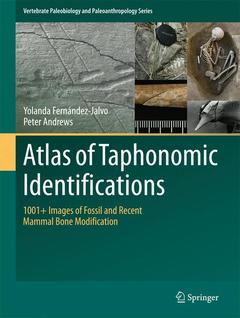Description
Atlas of Taphonomic Identifications, 1st ed. 2016
1001+ Images of Fossil and Recent Mammal Bone Modification
Vertebrate Paleobiology and Paleoanthropology Series
Authors: Fernandez-Jalvo Yolanda, Andrews Peter
Language: English
Subjects for Atlas of Taphonomic Identifications:
Approximative price 116.04 €
In Print (Delivery period: 15 days).
Add to cartPublication date: 08-2016
Support: Print on demand
Approximative price 116.04 €
In Print (Delivery period: 15 days).
Add to cartPublication date: 06-2018
Support: Print on demand
Description
/li>Contents
/li>Comment
/li>
Comprehensive atlas with 1001 illustrations depicting taphonomic modifications
Casts new light on the type of modifications rather than the more traditional agent of modification
Will appeal to archaeologists, anthropologists and palaeontologists working in the field and in the laboratory who need to identify the processes affecting fossil bone, as well as pathologists and forensic anthropologists
Includes supplementary material: sn.pub/extras



